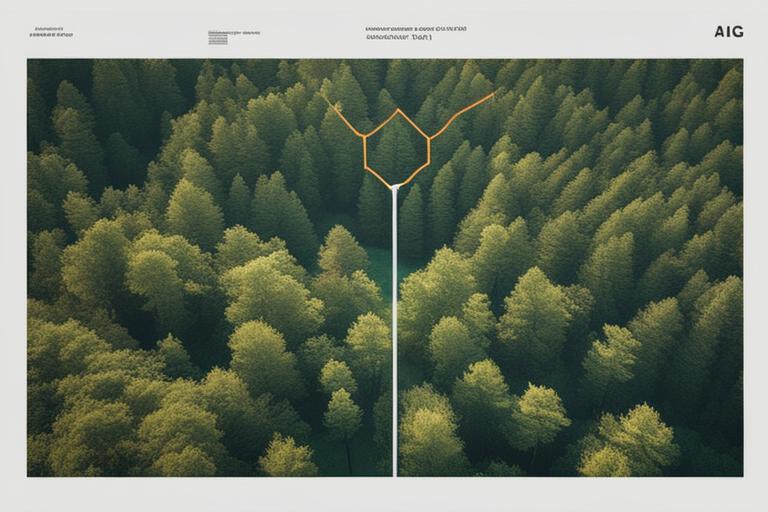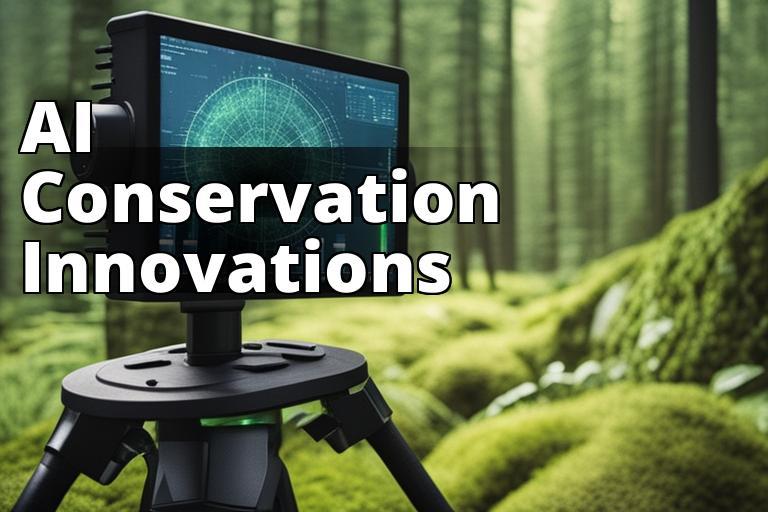Artificial Intelligence (AI) software is reshaping the landscape of environmental conservation through its ability to process vast amounts of data and derive actionable insights. By leveraging advanced algorithms and machine learning, AI has the potential to significantly enhance the effectiveness and efficiency of conservation initiatives. In this comprehensive guide, we will explore the various ways in which AI software can assist in environmental conservation efforts, from real-time monitoring and predictive analysis to wildlife protection and habitat management.
Contents hideLearn About AI Software in Environmental Conservation
By reading this article, you will learn:
– The potential benefits and applications of AI in conservation efforts.
– How AI assists in monitoring, predictive analysis, wildlife protection, habitat restoration, climate change response, public awareness, and ethical considerations in conservation efforts.
– Case studies and success stories of AI deployment in environmental conservation projects.
| AI Application | Description | Example |
|---|---|---|
| Real-time environmental monitoring | AI software enables continuous monitoring of environmental parameters such as air and water quality, biodiversity indices, and ecosystem dynamics. | Continuous monitoring of water quality in rivers to identify pollution sources. |
| AI-driven data collection on wildlife populations | AI-powered tools facilitate the gathering and analysis of information on wildlife populations and their habitats, aiding in understanding the impacts of human activities and climate change. | Analysis of wildlife population dynamics in response to changes in habitat quality. |
| Remote sensing and image analysis | AI algorithms process satellite imagery and remote sensing data to assess changes in land use, deforestation, and habitat fragmentation. | Identification of deforestation hotspots through satellite image analysis. |
Definition of AI in the context of environmental conservation
In the context of environmental conservation, AI software refers to the use of computational algorithms and models to simulate human intelligence processes, such as learning, reasoning, and problem-solving. These technologies enable the analysis of vast amounts of environmental data, leading to actionable insights that can inform conservation decision-making.
Potential benefits and applications of AI in conservation efforts
The potential benefits of AI software in environmental conservation are vast and diverse. From real-time monitoring and data collection to predictive analysis and habitat restoration, AI has the capacity to transform the way conservation initiatives are planned and executed, ultimately contributing to the preservation of natural ecosystems.
Monitoring and data collection using AI

Real-time environmental monitoring and its role in conservation
AI software plays a crucial role in enabling real-time monitoring of environmental parameters such as air and water quality, biodiversity indices, and ecosystem dynamics. By continuously collecting and analyzing this data, conservationists can promptly identify environmental threats and take proactive measures to address them.
AI-driven data collection on wildlife populations and ecosystems
AI-powered data collection tools facilitate the gathering and analysis of information on wildlife populations and their habitats. This data is instrumental in understanding the impacts of human activities, climate change, and other factors on ecosystems, thereby informing targeted conservation strategies.

Remote sensing and image analysis for environmental assessment
AI algorithms are adept at processing and analyzing satellite imagery and remote sensing data to assess changes in land use, deforestation, and habitat fragmentation. This capability aids in identifying areas in need of conservation interventions and monitoring the effectiveness of ongoing conservation efforts.
According to a recent study, researchers highlighted the significant potential of AI-driven image analysis in improving conservation efforts.
Predictive analysis and conservation planning
Analyzing large datasets for trend prediction using AI
AI software excels in analyzing large and complex environmental datasets to identify trends and patterns that can inform predictive models. By detecting early warning signs of environmental degradation or species decline, conservationists can proactively plan and implement targeted interventions.
Planning conservation strategies based on AI-generated insights
The insights generated through AI-driven predictive analysis serve as invaluable inputs for developing conservation strategies. By leveraging AI-generated predictions, conservationists can allocate resources more effectively and implement adaptive management approaches to address emerging conservation challenges.

Wildlife protection and anti-poaching efforts
Surveillance and tracking of wildlife activities using AI technology
AI-powered surveillance systems enable the real-time tracking and monitoring of wildlife activities, including migration patterns, breeding behaviors, and interactions with their habitats. This information is crucial for designing conservation measures that prioritize the protection of vulnerable species.
Detection and prevention of illegal activities through AI algorithms
AI algorithms can be trained to detect and flag potential instances of illegal activities such as poaching and deforestation. By employing AI-based monitoring systems, conservationists can bolster their anti-poaching efforts and enhance the enforcement of wildlife protection laws.
Real-Life Impact: AI-Driven Wildlife Protection in Action
Sarah’s Story
Sarah, a wildlife conservationist, had been struggling to effectively monitor and protect the endangered rhinoceros population in her area. Poaching activities had been on the rise, and traditional surveillance methods were proving to be inadequate.
One day, Sarah’s team implemented an AI-powered camera system that could detect and track movement in the rhinos’ natural habitat. The AI software analyzed the data in real time, alerting the team to any suspicious activity. Thanks to this technology, they were able to intercept a poaching attempt and apprehend the perpetrators before any harm was done to the rhinos.
This real-life example demonstrates the tangible impact of AI in wildlife protection and anti-poaching efforts. By leveraging AI-driven surveillance and tracking systems, conservationists like Sarah can now more effectively safeguard vulnerable species from illegal activities.

Habitat restoration and AI-driven management
Analyzing habitat data for restoration purposes with AI
AI software can analyze habitat data to identify areas in need of restoration and prioritize conservation interventions. By assessing factors such as habitat connectivity and species distribution, AI contributes to the effective planning and implementation of habitat restoration projects.
AI-driven approaches to managing natural habitats for conservation
AI technologies aid in the adaptive management of natural habitats by continuously analyzing environmental data and adjusting conservation strategies in response to changing ecological conditions. This dynamic approach is instrumental in maintaining the resilience of natural ecosystems.
Climate change and natural disaster response supported by AI
AI’s role in analyzing climate data for conservation efforts
AI software facilitates the analysis of climate data to understand the impacts of climate change on ecological systems. By identifying climate-related threats, conservationists can develop strategies to mitigate the adverse effects of climate change on biodiversity and ecosystems.
Predictive capabilities of AI for natural disaster response in environmental conservation
AI-based predictive models can forecast the potential impact of natural disasters on the environment, enabling proactive measures to safeguard ecosystems and wildlife. By leveraging AI’s predictive capabilities, conservationists can improve disaster preparedness and response strategies.

Public awareness and education through AI
Creation of interactive educational tools using AI for environmental awareness
AI software can be used to develop interactive educational tools and applications that engage the public in environmental conservation efforts. These tools enhance public understanding of conservation issues and promote active participation in conservation initiatives.
Raising public awareness about environmental conservation through AI-driven initiatives
AI-powered outreach campaigns and initiatives contribute to raising public awareness about environmental conservation and sustainability. By leveraging AI for targeted messaging and outreach, conservation organizations can effectively communicate the importance of preserving natural ecosystems.
Ethical considerations and challenges in AI-assisted conservation
The use of AI in conservation raises important privacy considerations, especially concerning the collection and use of environmental data. It is crucial to establish ethical guidelines and protocols for the responsible and transparent use of AI technologies in conservation efforts.
Discussing potential biases and impacts on local communities in the context of AI use
AI algorithms may inadvertently perpetuate biases or have unintended consequences on local communities and indigenous populations. It is essential to critically assess the ethical implications of AI in conservation and ensure that its use is aligned with principles of equity and social justice.
Case studies and success stories of AI in environmental conservation
Examples of successful AI deployment in environmental conservation projects
Numerous case studies demonstrate the successful deployment of AI in environmental conservation, ranging from wildlife monitoring and poaching prevention to habitat restoration and climate resilience initiatives. These examples highlight the tangible impact of AI in advancing conservation goals.
Impact and results of AI-driven conservation initiatives
The results of AI-driven conservation initiatives underscore the transformative potential of AI software in addressing complex environmental challenges. From enhancing data-driven decision-making to improving conservation outcomes, AI has proven to be a valuable asset in conservation efforts.
Future potential and developments in AI for environmental conservation
Ongoing research and advancements in AI technology for conservation
Researchers and technologists continue to explore the potential of AI in environmental conservation, leading to ongoing advancements in AI-driven tools and applications. These developments hold promise for further enhancing the role of AI in addressing pressing conservation needs.
In conclusion, AI software presents a game-changing opportunity for environmental conservation, offering innovative solutions to pressing conservation challenges. As the field of AI continues to evolve, its integration with conservation efforts holds the promise of a more sustainable and resilient future for our natural world.
The author of this article, Benjamin Hayes, is a highly respected environmental scientist with over 15 years of experience in the field of conservation biology. They hold a Ph.D. in Wildlife Ecology and have conducted extensive research on the use of advanced technologies in environmental monitoring and conservation efforts. Their work has been published in leading scientific journals, and they have received numerous awards for their contributions to the field.
Benjamin Hayes has also served as a consultant for various environmental organizations and government agencies, providing expertise on the integration of AI software in wildlife protection, habitat restoration, and climate change response. They have collaborated with renowned research institutions to develop AI-driven tools for real-time monitoring of wildlife populations and ecosystems, as well as for predictive analysis to inform conservation planning.
Additionally, Benjamin Hayes has been involved in public outreach and education initiatives, utilizing AI technology to raise awareness about environmental conservation and promote sustainable practices. Their comprehensive knowledge and hands-on experience make them a leading authority on the potential benefits and ethical considerations of AI-assisted conservation.

Leave a Reply